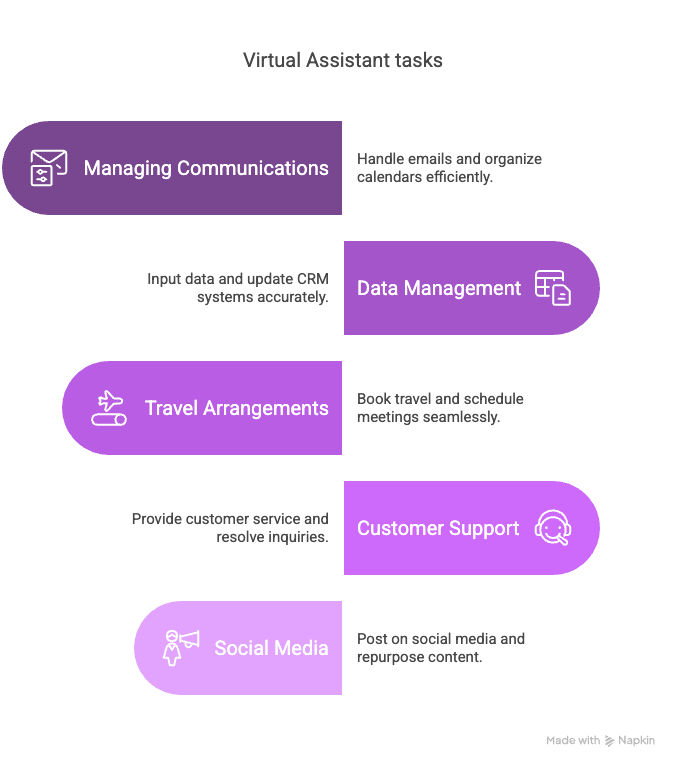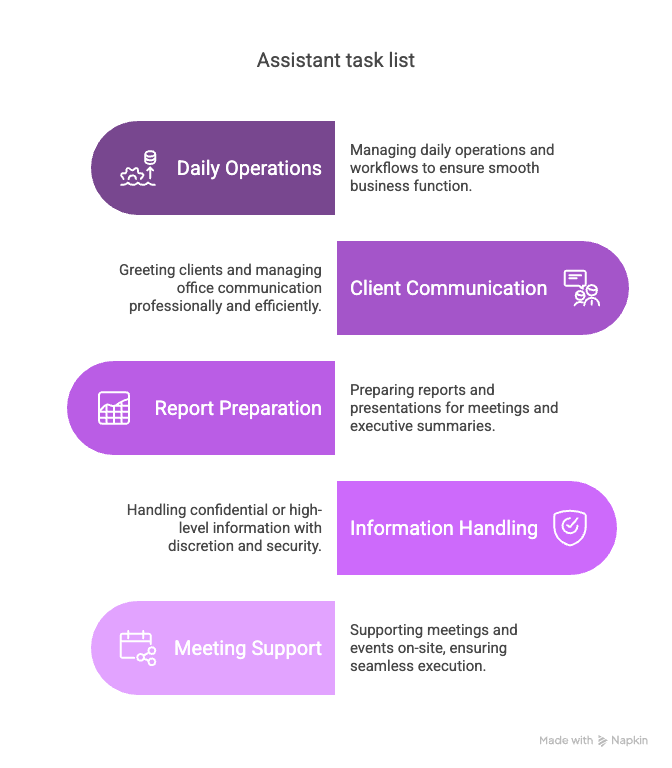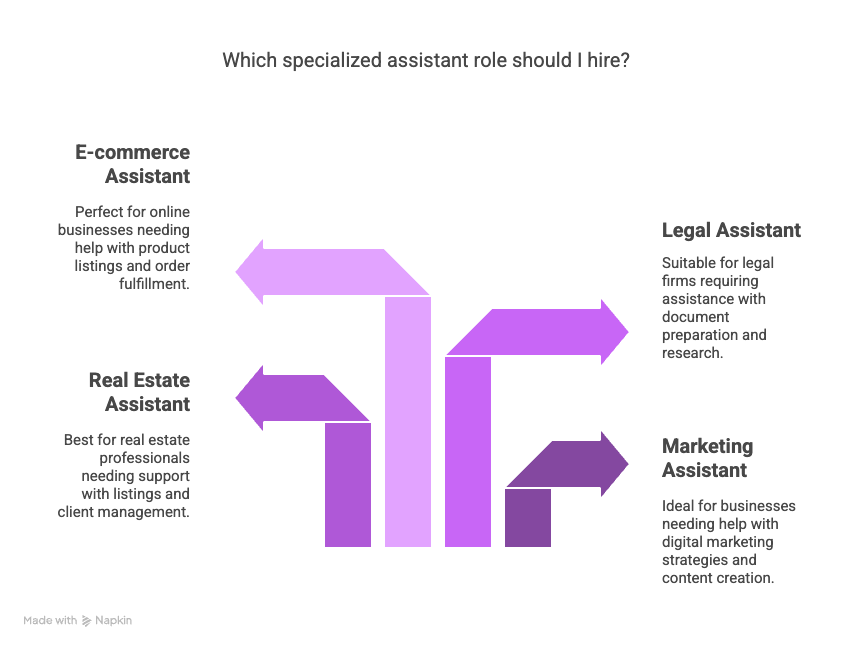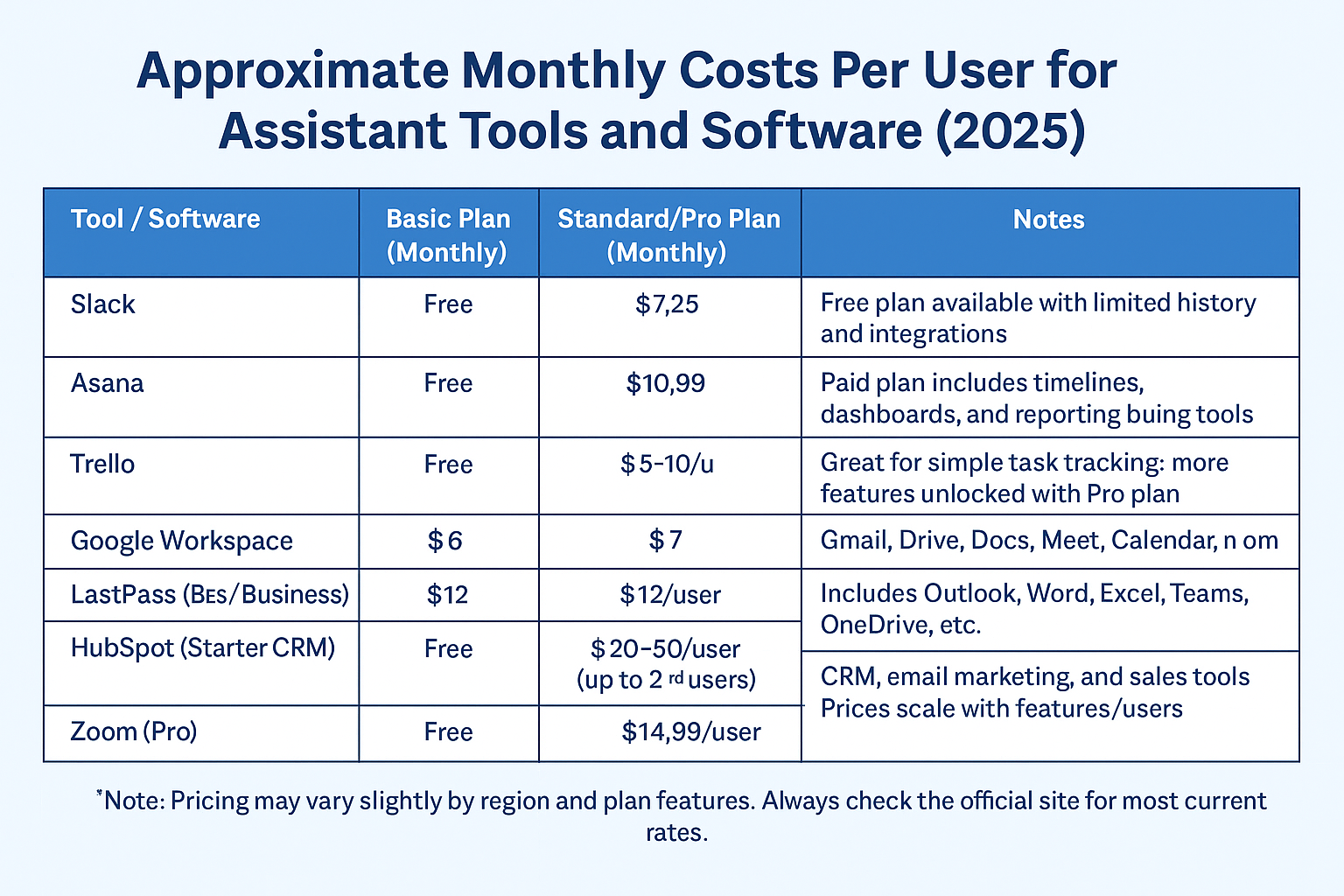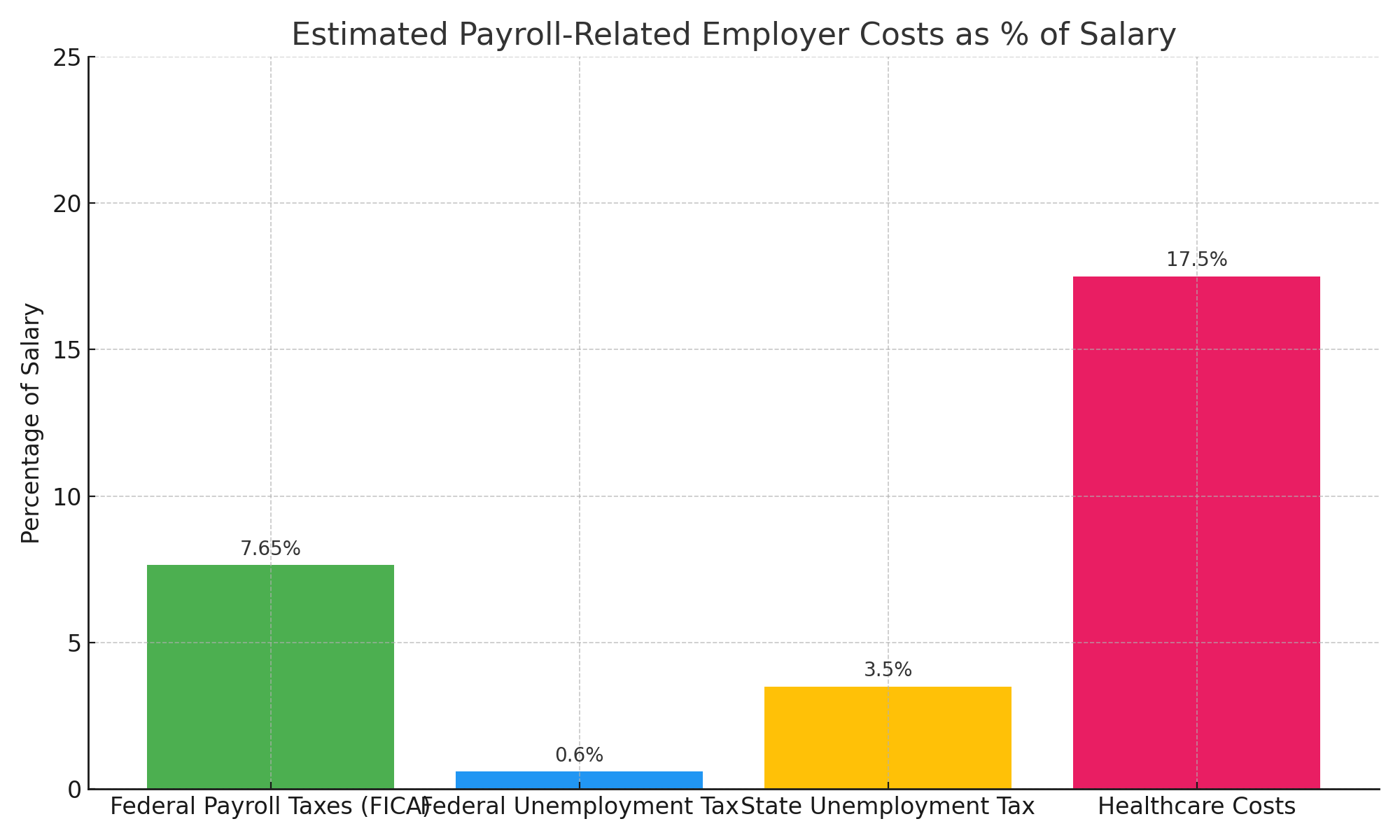Assistants come in several types, including personal assistants (who manage personal errands and schedules), administrative assistants (who handle office tasks and support teams), executive assistants (who support senior executives with complex tasks and project management), and chief executive assistants or chiefs of staff (who oversee strategic operations and manage other assistants).
Hiring the right assistant is crucial because they free up your time, boost productivity, and help you focus on high-impact work, while also improving work-life balance and reducing stress by handling routine or time-consuming tasks efficiently.
Interested in hiring an assistant? With Go Carpathian, you can outsource highly skilled professionals from Eastern Europe, South Africa, Latin America, and the United States. Outsourcing in these regions allows you to reduce operational costs while leveraging the expertise of the local pre-vetted talent.
Contact us today to schedule a meeting with our recruiting specialist.
In this article, we will discuss how much it costs to hire an assistant, what the types of assistants are, what the key factors that impact the cost of an assistant are, what hidden costs you need to consider, and how to hire the right assistant for your budget.
Types of Assistants You Can Hire
Choosing the right type of assistant depends on your specific needs and requirements. Whether you require personal help, business support, or industry-specific expertise, you can choose between many types of assistants, each specializing in different areas to support individuals or businesses:
Virtual Assistants (VAs)
Virtual assistants are remote professionals who handle a wide range of tasks from anywhere in the world. They’re a great fit for small business owners, entrepreneurs, or busy professionals who need flexible, affordable support without the cost of hiring full-time in-house staff.
Typical tasks include:
- Managing emails and calendars
- Data entry and CRM updates
- Booking travel and scheduling meetings
- Customer service support
- Social media posting and content repurposing
Best for: Businesses looking to save time and money without compromising on support.
In-Person or Executive Assistants
In-person assistants work on-site and are ideal for professionals who need hands-on help in an office or home environment. Executive assistants, in particular, often support high-level executives with complex schedules and sensitive information.
Typical tasks include:
- Managing daily operations and workflows
- Greeting clients and managing office communication
- Preparing reports and presentations
- Handling confidential or high-level information
- Supporting meetings and events on-site
Best for: C-level executives, entrepreneurs with physical offices, or anyone needing a right-hand person in the same location.
Specialized Assistants
If your work requires specific knowledge or industry skills, a specialized assistant might be the best fit. These professionals go beyond basic admin work to support tasks that require technical know-how or experience in a particular field.
Examples include:
- Marketing Assistants: Help with SEO, social media, email campaigns, and content creation
- Real Estate Assistants: Handle MLS listings, client follow-ups, and paperwork
- Legal Assistants: Assist with document preparation, research, and case filing
- E-commerce Assistants: Manage product listings, order fulfillment, and customer inquiries on platforms like Shopify or Amazon
Best for: Business owners or teams who need an assistant with knowledge of a specific industry or toolset.
How Much Does It Cost an Assistant in 2025
The cost of hiring an assistant in 2025 can vary widely depending on the type of assistant, their experience level, location, and whether they work remotely or in person.
Here’s a breakdown to help you understand what to expect:
Virtual Assistant Rates
Virtual assistants (VAs) are often the most cost-effective option, especially if you’re open to working with talent outside of your country.
- Overseas VAs (e.g., Eastern Europe): Expect to pay $5–$15/hour depending on their skills and English proficiency. Many offer monthly packages ranging from $1,000 to $1,500/month for part- or full-time support.
- U.S. & Western-based VAs: Rates are higher, typically around $20–$50/hour, with monthly retainers ranging from $3,400 to $4,000+ for ongoing work.
In-Person Assistant Salaries
If you need someone physically present, like an executive or office assistant, the cost is typically higher due to added overhead and local wage laws.
- Part-time Assistants: Hourly rates typically range from $14 to $35/hour, depending on location and responsibilities.
- Full-time Assistants: Salaries range from $70,000/year to $125,000/year.
Freelance or Contract-Based Assistants
Freelance assistants are hired on a project-by-project or contract basis, offering maximum flexibility without a long-term commitment.
- Project rates: Project rates start around $100 for small tasks (like organizing spreadsheets or booking travel)
- Ongoing contracts: Often range from $1,000 to $3,000/month based on workload and complexity
Key Factors That Affect Assistant Hiring Cost
Understanding these factors helps employers budget effectively and choose the right assistant type for their needs. If you want, I can provide specific cost estimates based on your location or assistant role.
Key factors that affect the cost of hiring an assistant include:
Experience and Skill Level
More experienced and specialized assistants command higher rates, with senior executive assistants earning significantly more than entry-level ones.
Location
Geographic location greatly impacts cost due to varying living expenses; assistants in metropolitan or high-cost areas charge more, while those in lower-cost countries or remote areas tend to be cheaper.
Employment Type (Remote vs. In-House)
In-house assistants incur additional costs such as office space, equipment, and benefits, making them more expensive than remote or virtual assistants.
Workload and Hours (Part-Time vs. Full-Time)
Full-time assistants cost more overall due to consistent hours, while part-time or project-based assistants offer more flexibility and lower total costs.
Hiring Method
Direct hires may involve recruitment fees, onboarding, and ongoing employment taxes, whereas agency or platform hires often bundle these costs into service fees.
Task Complexity and Specialization
Assistants handling specialized or complex tasks (e.g., multilingual support, project management) typically charge higher rates.
Contract Type (Project vs. Ongoing)
Project-based hires vary widely in cost depending on scope, while ongoing contracts usually involve monthly retainers that reflect the level and consistency of support required.
Hidden Costs to Consider
When budgeting to hire an assistant, it’s easy to focus only on their hourly rate or salary. But there are often overlooked costs that can impact your bottom line. Here are some hidden expenses to keep in mind before bringing someone on board:
1. Training and Onboarding Time
Even experienced assistants need time to learn your systems, processes, and preferences. Whether you’re working with a virtual or in-person assistant, you may need to invest several hours, or even weeks, getting them up to speed.
2. Tools and Software
Many assistants rely on tools like project management software, communication platforms, CRM systems, or time trackers. Depending on the tools you use, you may need to pay for an additional license or upgrade your current plan.
Some of the most used assistant tool and software tools and software include:
- Slack, Asana, Trello, or ClickUp
- Google Workspace or Microsoft 365
- LastPass, HubSpot, Zoom, etc.
And here is the cost breakdown for the most-used assistant tools and software:
3. Management and Oversight
Even the best assistants need regular check-ins, feedback, and occasional supervision, especially early on. If you’re managing them yourself, be prepared to spend time reviewing work, answering questions, and aligning on priorities.
4. Taxes and Compliance (for In-Person or U.S.-Based Assistants)
If you hire an assistant as a W-2 employee, you’ll need to handle payroll taxes, benefits, insurance, and compliance with labor laws. Even hiring contractors can come with reporting requirements like 1099 forms in the U.S.
Here’s a quick breakdown of domestic employment costs:
- Managing federal payroll taxes (7.65% for FICA)
- Federal unemployment taxes (0.6% after credits)
- state unemployment taxes (typically 2.7-6.2%), totaling around 11.75% of payroll expenses
- Healthcare: 15-20% of an employee’s salary
5. Turnover and Replacement Costs
If your assistant leaves unexpectedly, you’ll need time (and possibly money) to find and train a replacement. This can cause delays in operations and add stress to your workflow.
Need a Partner to Find Quality Assistants?
The cost of hiring an assistant is influenced by several key factors: the type of assistant (administrative, personal, executive, or specialized), their level of experience and expertise, and their geographical location, with higher rates in major cities or high-cost regions.
Whether the assistant is full-time or part-time, in-person or virtual, also impacts the rate, as in-person and full-time roles generally command higher compensation due to additional overhead and benefits The complexity and specialization of the tasks required, as well as the assistant’s resume and experience, further affect pricing, with specialized or highly experienced assistants charging premium rates. Finally, additional benefits, perks, and employment-related costs such as insurance, taxes, and bonuses can significantly increase the total cost of hiring an assistant.
Have you considered hiring an assistant? International recruiting can significantly impact business profitability and quality by allowing companies to leverage skills and economies of scale, thereby reducing operational costs and enhancing profitability. It also enables businesses to focus on core operations, driving strategic growth and innovation.
Go Carpathian is the most reliable partner for international recruitment. Schedule a Discovery Call to learn more about finding the best international hires in Eastern Europe, Latin America, South Africa, and the United States!



